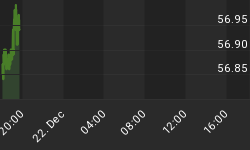The significant sell-off in the long end of the U.S. bond market has at long last resulted in the price of 10-year Treasuries to correctly reflect the state of the underlying economy. Since 1999 the yield on the 10-year Note has narrowly tracked the Conference Board's Consumer Confidence Index. In the second half of last year the yield dropped significantly below the level of the confidence index. It was either due to the market expecting an imminent double-dip recession or some other forces that were at work. In fact, it was the latter as a result of the culmination of QE1 and QE2 via the repurchase of government bonds by the Fed.
Since 1999:

Sources: I-Net; Plexus Asset Management.
Given the historical relationship between the yield on the 10-year note and consumer confidence it appears that the 10-year note is currently aptly priced at 3.40% compared to the sentiment index at 60.6.

Sources: I-Net; Plexus Asset Management.
The outlook for U.S. bonds undeniably rests on the outlook for the U.S. economy and especially consumer confidence. It is telling me that any weakness in the economy will solemnly be reflected in lower bond rates and a flattening of the slope of the yield curve. Conversely, if the U.S. economy maintains its upward trajectory yields may rise further, resulting in further losses in the bond market.
In the short term, bond prices appear oversold (yields overbought) as shown by the RSI indicator (bottom panel) in the chart below. Lower yields over the next few weeks will be consistent with "risk-off" type of scenario that seems to be unfolding. However, on a longer-term horizon one needs to keep a very close eye on the 28-year downward trend (resistance) line (not shown below) that could be threatened during the next kick-up in yields.

Source: StockCharts.com
Did you enjoy this post? If so, click here to subscribe to updates to Investment Postcards from Cape Town by e-mail.















